I want to learn more about ETOD in Chicago.
What is equitable transit-oriented development (ETOD) and why does it matter? Learn more about the benefits and principles of ETOD here.
I want to focus on a specific parcel or address.
The ETOD Calculator works for all parcels located within Cook County.
Begin by entering the address or property pin # in the 1 "Enter Address or Pin #" field of the ETOD Caluclator.
Pro tip
If you don't have a specific address in mind, you can also enter a ZIP code, neighborhood, or cross streets to zoom to that area, and then select any specific parcel by clicking directly on the map.
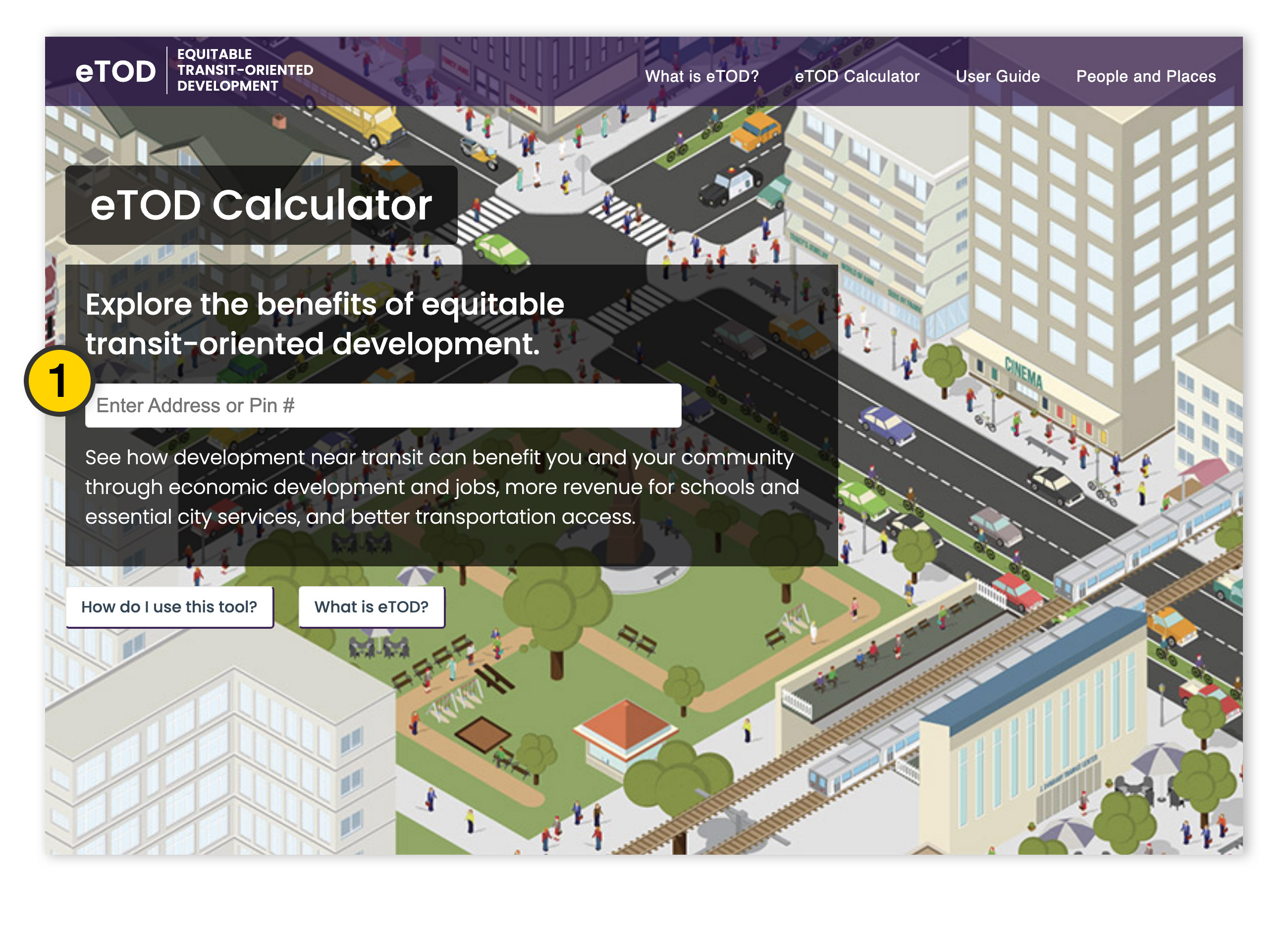
Once a location is entered or a parcel is selected, you will see an overview that includes 1 a map and 2 property details.
1 Map
The map provides an overhead view of your selected location and includes many tools to explore what's nearby and other information through map layers.
- Zoom between ¼ mile, ½ mile, and 1 mile from the parcel.
- Switch between satellite and streetview.
- Toggle through any of the map options to explore the area.
- Click anywhere on the map to select a different parcel.
2 Property details
Review property details and other resources useful to developers.
- The development scenario, by default, creates an average hypothetical building in the selected parcel's neighborhood. But you can customize this by clicking "edit building plan." You can change the building’s number and size of units, use (such as commercial or office space), and number of parking spaces to see community impacts and transit benefits are affected.
- The label “Qualified Development Areas” indicates whether the selected parcel falls within an area that qualifies for certain development incentives such as the City of Chicago’s TOD Ordinance, Tax Increment Financing (TIF), Low Income Housing Tax Credits (LIHTC), Opportunity Zone financing, or New Markets Tax Credits.
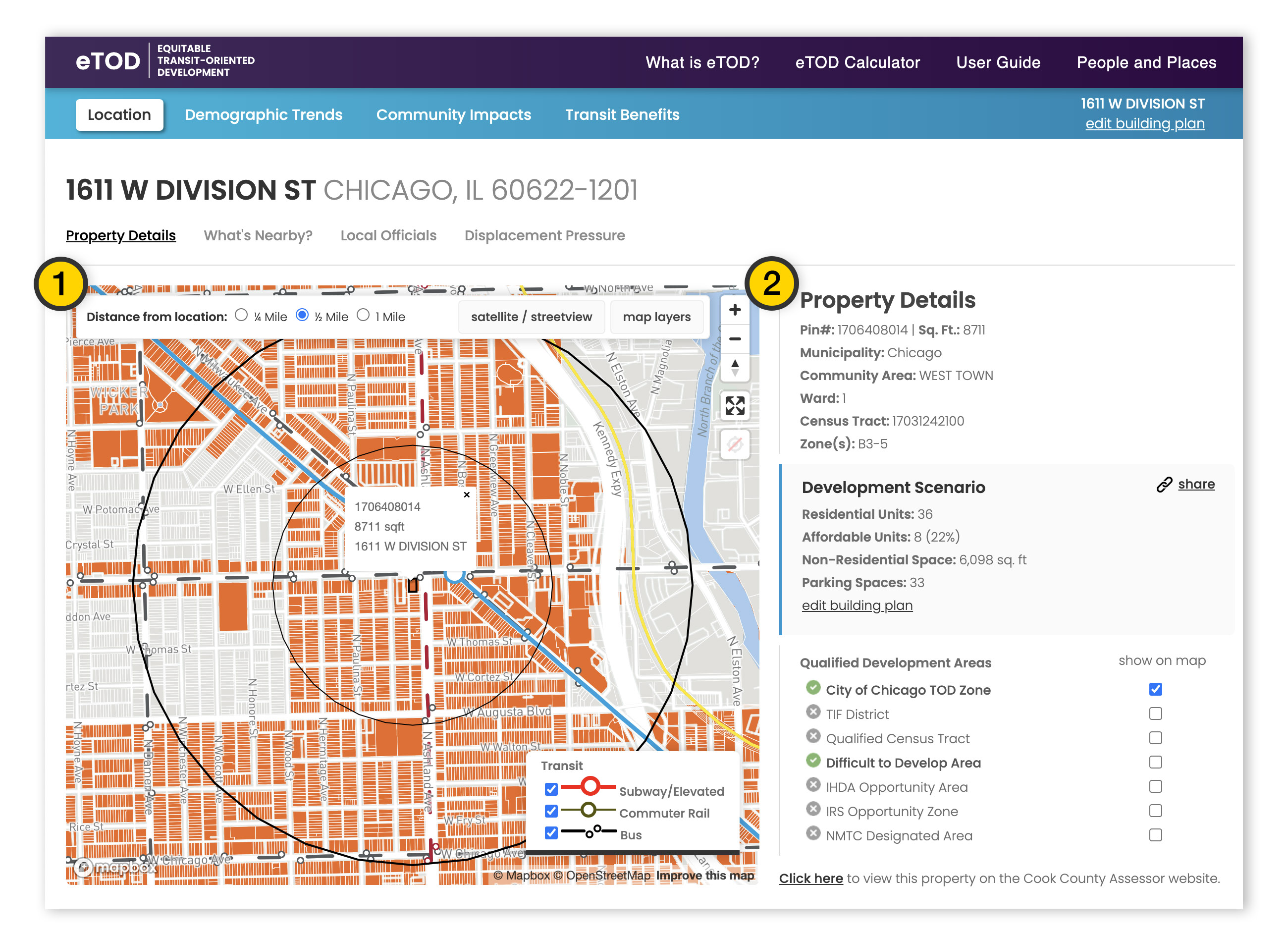
Additional details about a parcel's location are available by clicking:
1 What's Nearby? 2 Local Officials and 3 Displacement Pressure
1 What's Nearby?
- See what transit lines, mobility options, and services and amenities are close to your parcel.
- The information shown is based on the selected distance from the parcel:
¼ mile, ½ mile, or 1 mile. - Click the "show on map" checkboxes to view nearby items of interest.
2 Local Officials
- Get the contact information for your parcel's local officials.
3 Displacement Pressure
- Learn how your development may affect housing affordability and displacement in the surrounding neighborhoood. This information is available courtesy of the Institute for Housing Studies at DePaul University who developed a Mapping Displacement Tool.

Demographic trends for a selected parcel can be viewed by clicking the 1 Demographics button in the blue navigation bar.
2 Demographic Trends
- View demographic data from 2000, 2010, and 2020, and see how it has changed over time. Click show more at the bottom of the table to view even more demographic data.
- Demographic data can also be viewed within ¼ mile, ½ mile, and 1 mile of the selected parcel.
3 Demographic Trendlines
- View trendlines for key demographic data: Rent, Median Income and % BIPOC residents. For the purposes of this tool, BIPOC residents is defined as people who self-identified as anything besides white and non-Hispanic on the American Community Survey.

I want to create a design for a hypothetical TOD project on a specific parcel.
The ETOD calculator allows you to fully customize the design of a building plan to see how different characteristics might affect the surrounding community and what transit benefits will be available to potential future residents. By default, the development scenario estimates the characteristics of an average building in the selected parcel's neighborhood. For Chicago locations, affordable units are automatically calculated based on the Affordable Requirements Ordinance (ARO). The building design can be adjusted at any time manually. Click the 1 "edit building plan" link to customize the number and type of units, amount of retail or commercial space, and number of parking spaces to see how the local community and transit benefits are affected.
Building Plan Editor
To get started click the "edit building plan" link located below your parcel's address in the:
1 blue menu bar
or in the:
2 development scenario section of the property details.
Pro tip
You can also edit a building plan on the fly when exploring the Community Impacts section.
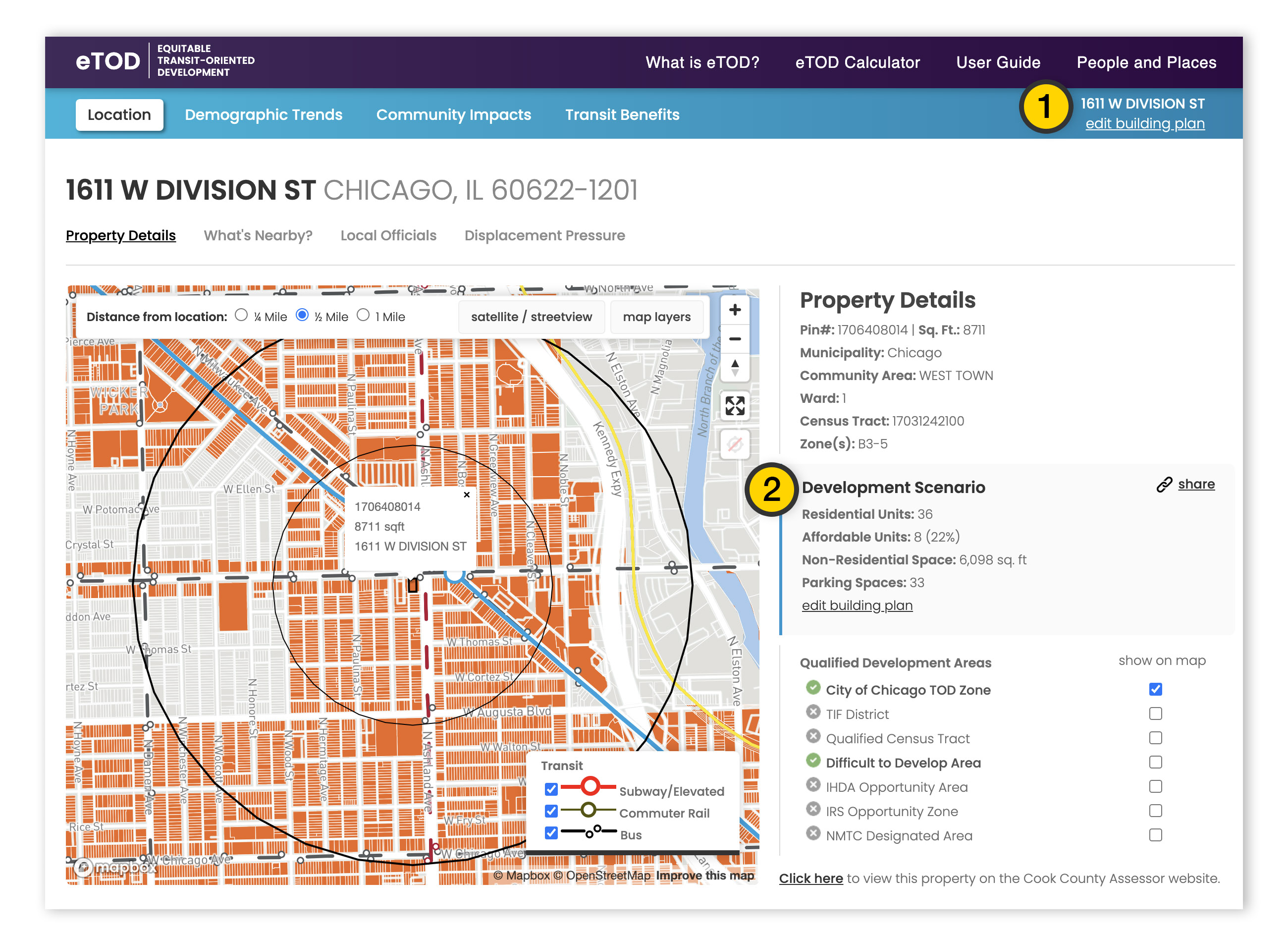
The building plan editor allows you to edit 1 residential units 2 non-residential space and 3 parking spaces.
Closing the Building Plan Editor window will save any edits you've made.
Building Plan Editor
Click "edit details" for advanced customization of:
1 Residential Units
Residential units can be customized with as little, or as much detail as needed.
- Rent
- Number of Studio, 1BR, 2BR, 3BR and 4+ BR units
- Number of affordable units per unit type, including each HUD income category
2 Non-Residential Space
Specify total square footage of:
- Retail space
- Commercial space
- Industrial space
3 Parking Spaces
Specify total number of:
- Residential parking
- Non-Residential parking
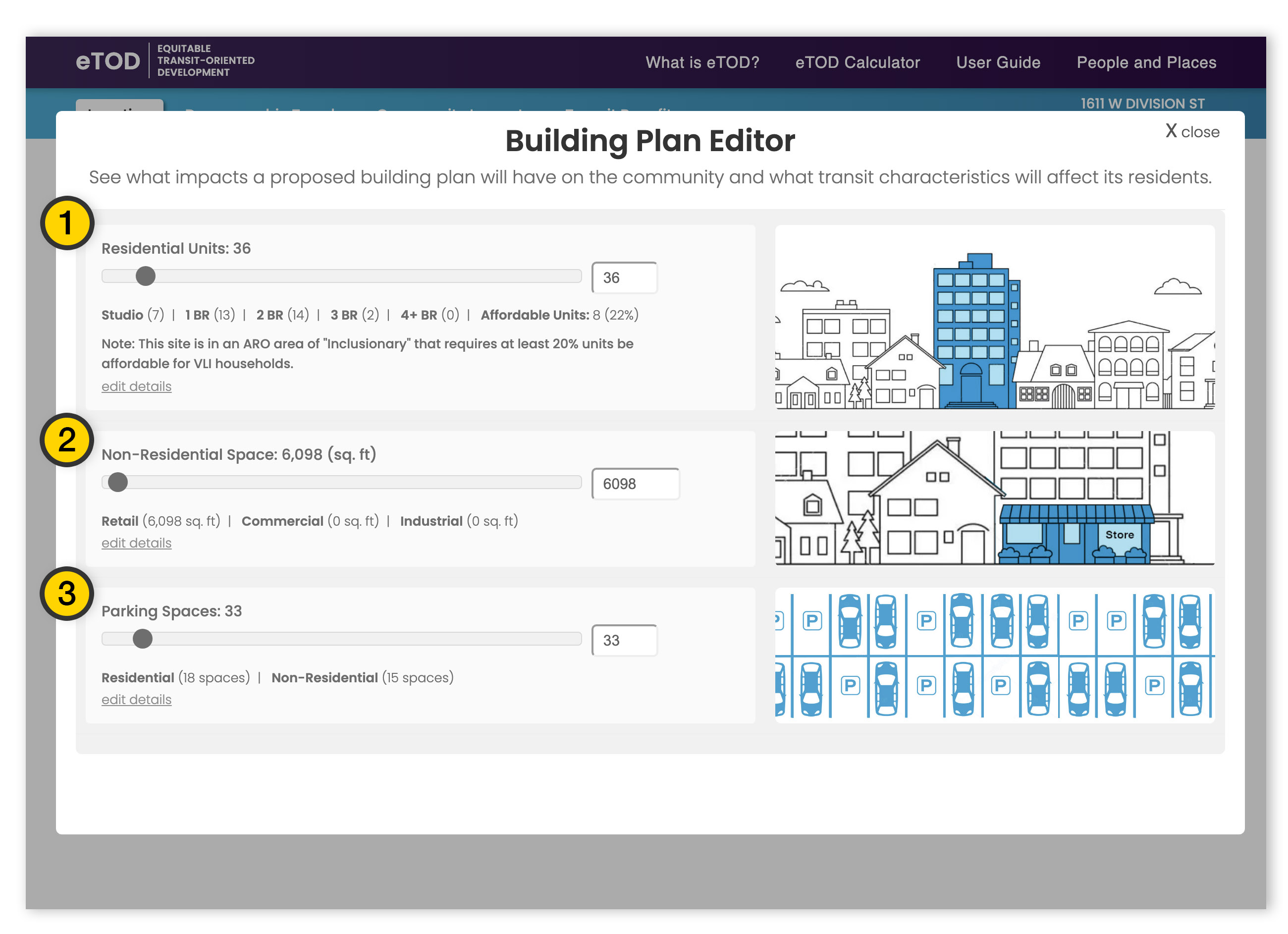
To see how a building plan could impact its surrounding community, scroll down to the 1 Community Impacts section, or just click the "Community Impacts" button in the blue menu bar to jump to that part of the ETOD calculator.
pro tip
At any point, you can open the Building Plan Editor by clicking the "edit building plan" link to adjust the characteristics of your building.
You can also click the "share" link to create a permalink to preserve the location and building plan you have customized.
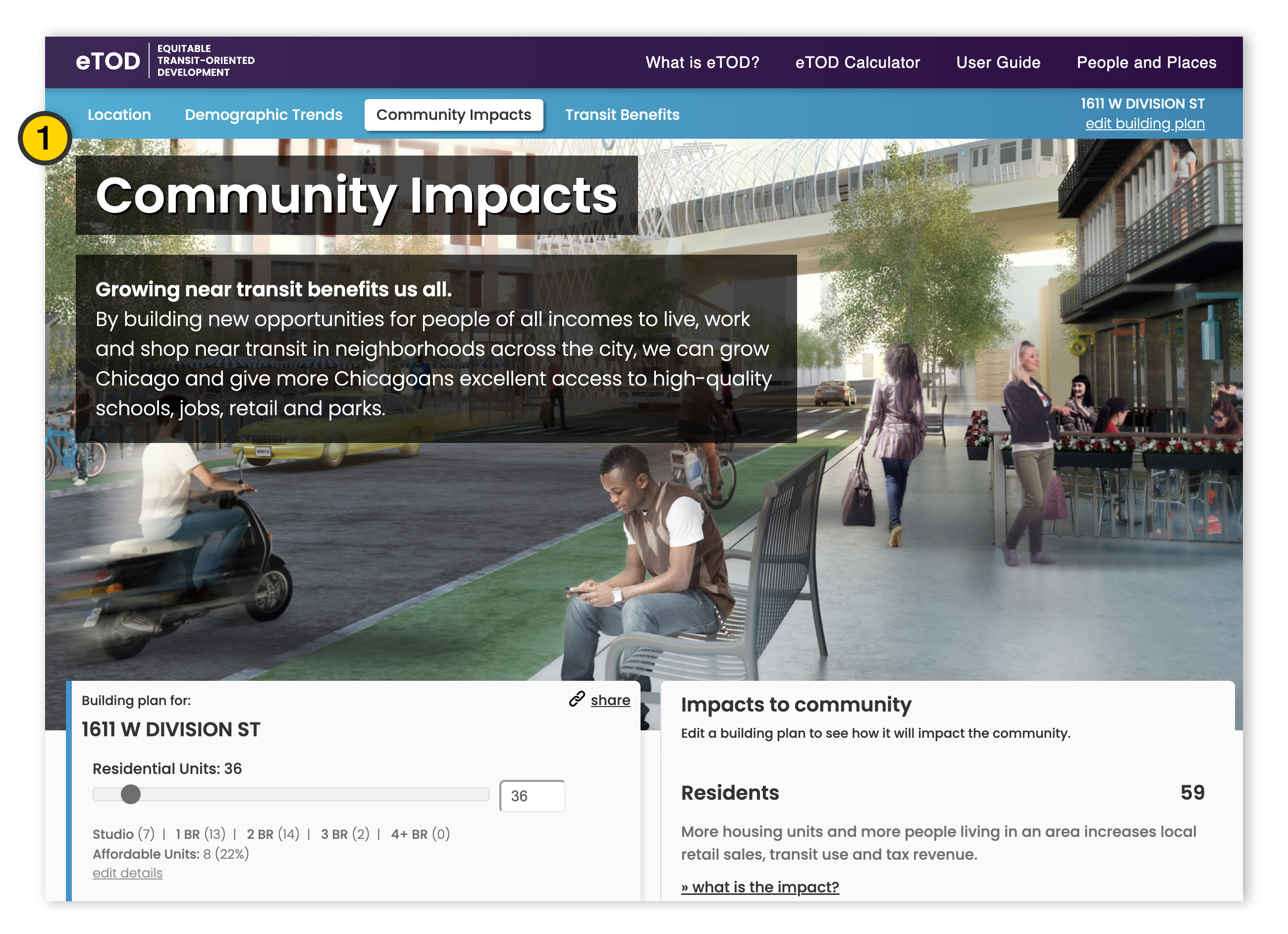
As you scroll down the Community Impacts section, a snapshot of 1 your building plan is accessible on the left-hand column alongside 2 a summary of community impacts on the right-hand column.
1 Building Plan Snapshot
This snapshot will scroll alongside the community impacts for quick reference, and quick editing.
At any point, you can click the "share" link to create a permalink to preserve the location and building plan you have customized.
2 Community Impacts
See the many different ways your building plan could impact the community.
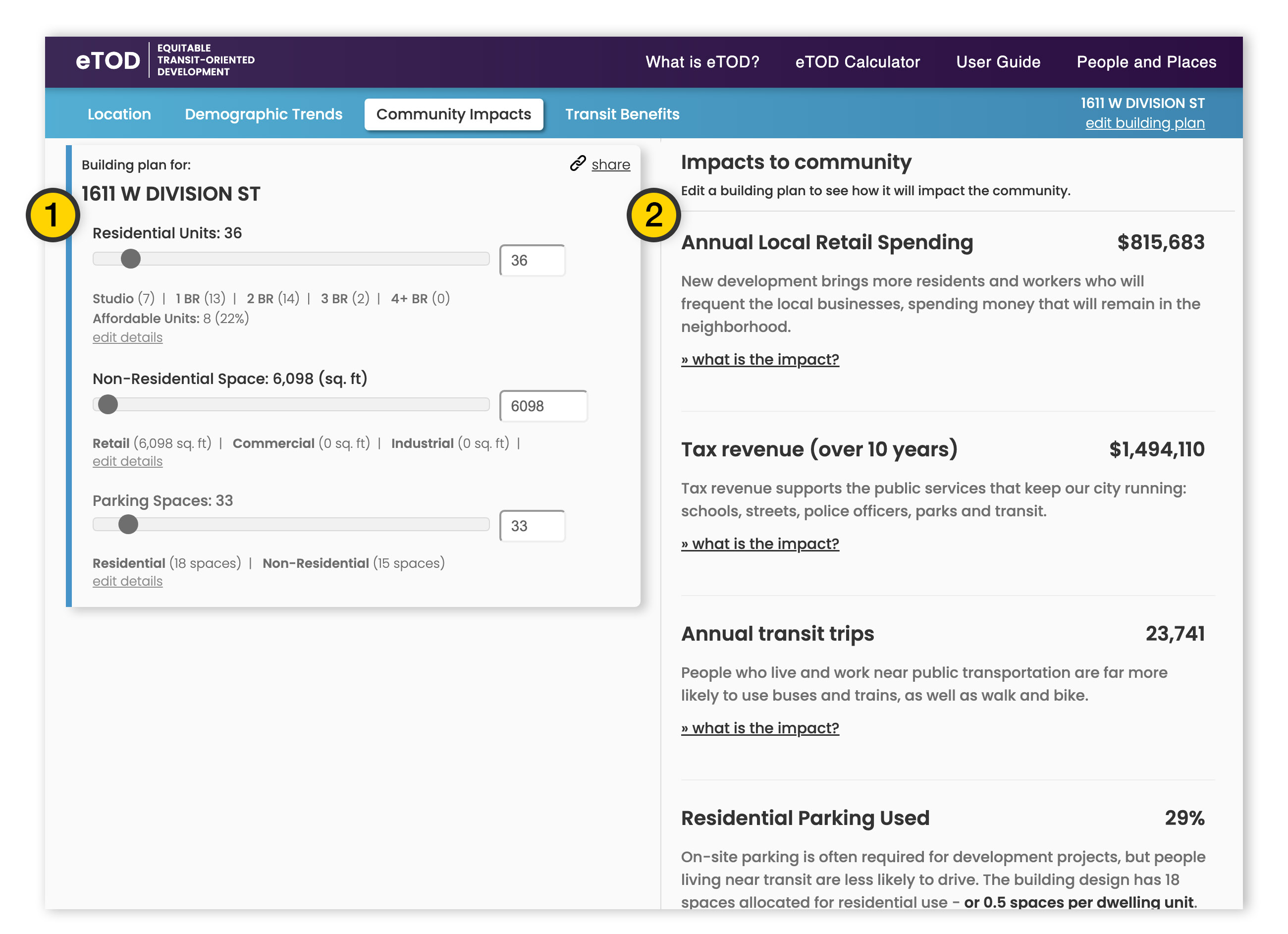
The ETOD Calculator allows you to explore the relationship between your building design and the community impacts it may have. Edit 1 advanced details on-the-fly and community impacts will be calculated alongside as you make changes.
1 Edit Details
All editable details from the Building Plan Editor are accessible in this condensed editor so you can make quick changes here and see how community impacts are affected.
2 Community Impacts
Any community impacts affected by edits made to the building plan will be briefly highlighted in yellow to highlight what has changed.
Click any of the "What is the impact?" links to show additional in-depth community impact data estimates, research and other resources.
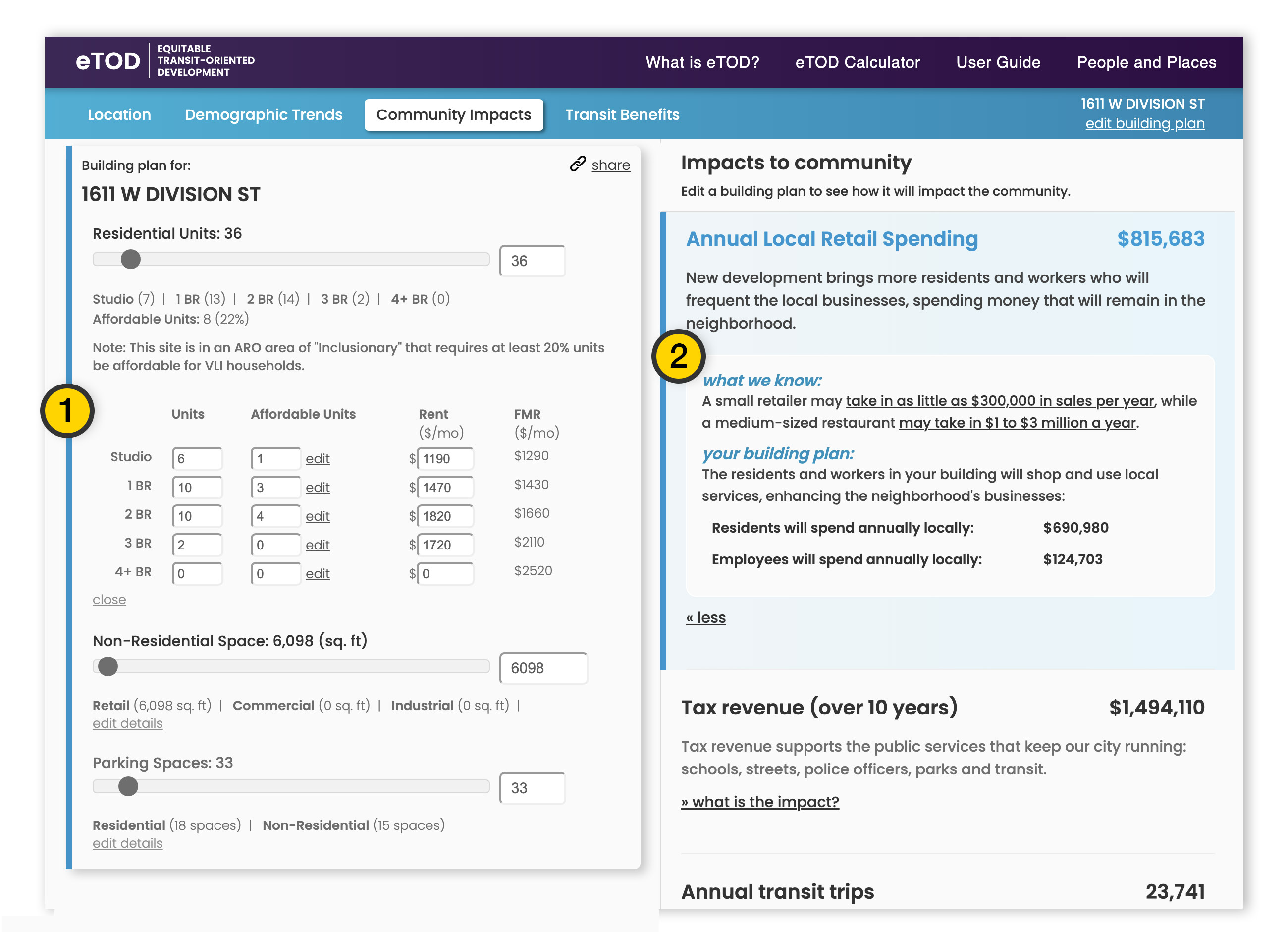
To see what transit benefits would be available to residents of a building at your selected location, scroll down to the 1 Transit Benefits section, or just click the "Transit Benefits" button in the blue menu bar to jump to that part of the ETOD calculator.
1 Transit Benefits
See how your site's location and building plan compares to the average TOD site near transit and the average non-TOD site without transit nearby.
- Transit Score: The AllTransit Performance score is an overall transit score (10 point scale) of how well public transit serves this neighborhood. Visit the AllTransit tool here.
- Job Access: Total jobs accessible within a 30-minute transit trip of your location.
- Transportation Costs: Transportation costs per month per household based on your location and building plan.
- Auto Reliance: Average number of vehicles owned per household based on your location and building plan.

I want to see some successful ETOD projects.
Examples of ETOD case studies and resident testimonials are available on the People and Places page.
I want to read the methodology behind the ETOD Calculator.
The methodology and source data behind the ETOD Calculator is available to download here:
ETOD Methodology (PDF).




